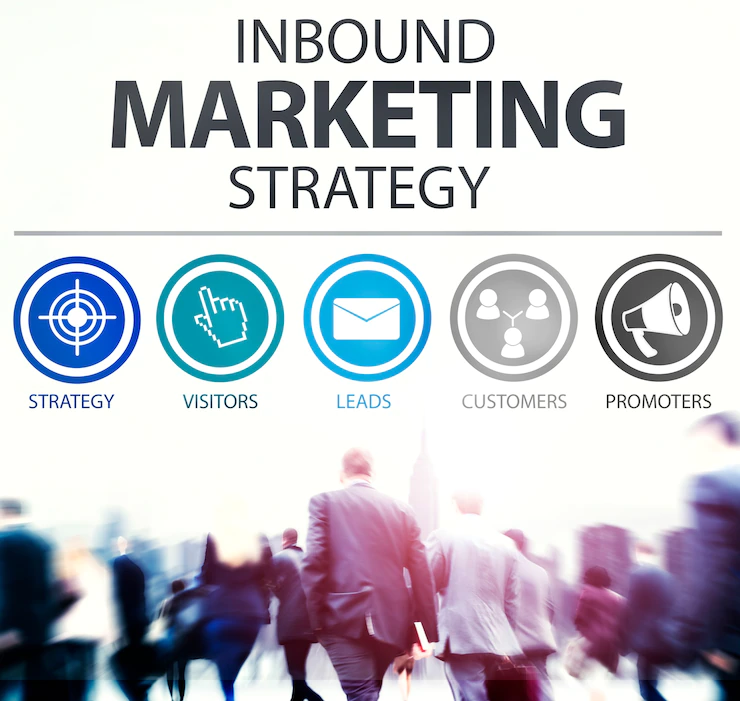

With time, new trends and technologies emerge in inbound marketing strategies, which make it even more difficult for businesses to stay on top of their game. As your business strives to improve its marketing performance and finds new ways to increase sales figures, it will always face challenges along the way and how you bring in new methods to solve them.
Technology is changing marketing strategies and today's product managers are responsible for all things digital as well. To stand out from the crowd of marketers doing similar jobs and attract customers to your business, you'll need to get creative and look for new ways to reach out to your target audience. For example, an inbound marketing strategy involves using multiple online channels to establish trust by offering valuable information that resonates with your customer base and pushes them in the right direction towards making a purchase.

Inbound marketing strategy plays a critical role in attracting and acquiring leads. It brings people to your site with an extensive knowledge base and interesting, engaging content, which helps them feel at ease enough to reach out. Inbound marketing strategy influences your leads to interact with you through things like blog comments, webinars, email marketing campaigns or social media; that way, you can work on building long-term relationships that may eventually turn into opportunities for remarketing down the line. This strategy is a lot more effective than traditional methods of blanket advertising because it has much greater accuracy.
Another inbound marketing challenge that is addressed is the lack of brand awareness. This can happen for lots of reasons, like people confusing your brand for another one. In any case, growing your brand visibility enables you to compete and discover your brand as well as reinforce your existing customer base by learning more about what they want from their relationship with you.
Inbound campaigns help get the word out about a brand. It relies on both broadcasting and “narrowcasting” to distribute the message of your brand whether outwards through public relations or directly to customers in sales copy via email and web content.
Internally, people across departments may have erroneous ideas about what marketing can achieve. Since inbound marketing strategy makes it easy to use quantifiable metrics and closely monitor performance, creating realistic expectations for the marketing department is easier than ever before.
Today’s businesses can see how their marketing campaigns are performing by overcoming the inbound marketing challenges. They can then use this information to plan new campaigns, revise the overall strategy and set more realistic goals because of greater clarity into these metrics and KPIs, which will guide them as they strive toward their business objectives.
In the age of inbound marketing strategy, sales and marketing have become much more streamlined. Many business leaders have begun taking an interest in better aligning these two divisions and many companies are starting to move towards integrating their sales and marketing departments even further than they already were.
Sales shouldn't be the only department you aim to coordinate with when it comes to discussing marketing activities. It's also just as important to work closely with other departments, such as IT and human resources. The more integration and coordination between marketing, the more effective will be the brand campaign by the HR and IT.
Businesses that plan for the long term are the ones that are likely to succeed in terms of forwarding growth. Strategic planning sets an intention to think not only about your business here and now, but even further into the future.
Inbound marketing strategy is like relationships. It doesn’t change your company overnight but rather takes time to grow. Instead of putting the focus on making the next sale, it focuses on building lasting relationships with customers and it asks you to think not just about how you can make another sale, but how you can continue providing for every customer’s needs now and in the future. Inbound marketing strategy also focuses on conversion rates and assessing user behaviour & trends to fine-tune a campaign over time.
At TransFunnel, we create inbound marketing strategies backed by data and a keen understanding of what works and doesn’t. Our effective activities, including social media and email marketing campaigns are a result of several years of experience in the industry, across diverse domains and industries. We mix this sound knowledge with an outside-the-box approach to ensure you have strong control over your inbound activities and stay on top of all aspects of your inbound strategy. If you want to take your marketing to the next level, then there isn’t anything that beats our inbound strategy.
Combining this with reliable marketing automation, we can guarantee that you will stay on top of your whole inbound strategy and produce amazing results from it as well.